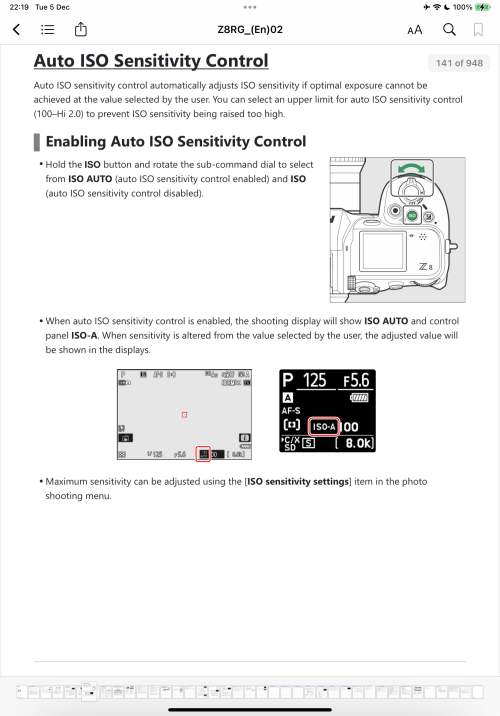I'm a Nikon shooter... but this may apply to other systems as well..
I am reconsidering how I program my shooting banks/custom banks on my Nikon Z9 and Z8 cameras.
Quick backstory... historically (pre 7/2017) I shot in manual exposure only. During a marine mammals workshop I was persuaded by the tour leader to shoot in Aperture Priority with Easy Exposure compensation. The recommendations was based on the unique lighting associated with the transition from a dark coastline against water where humpback and orca would emerge. I've maintained the steadfast use of Aperture Priority w/ EZ exposure Compensation for everything but landscape photography ever since.
I am now considering a return to manual exposure for shooting in snow or prairie landscapes where birds take flight. I've found that my current method results in blown out highlights when birds exit the snow and fly across a darker background. I've known this problem for years and would fiddle with exposure compensation to compensate... At issue is the finger gymnastics that results in missed photos.
Having shot manual for years before, I know that if I set my exposure correctly for, let's say a swan on a snowy surface, and it suddenly flies across a field of trees, my base (ambient) exposure for the swans is accurate and the highlights will not be blown... this assumes that my ISO remains constant with respect to the swans on the snow and the swans flying across the stand of dark trees.
If you've made it this far and you understand me, then you may be able to help me with this question... If I am shooting in manual exposure and I've got swans on snow at: 1/1250 / f7.1 / ISO 800 and I have Auto ISO to vary, from 64 to 6400, won't the ISO change and over-expose my shot to maintain the exposure triangle I described for the birds on the snow. If that's the case, then shooting in manual with auto ISO is essentially the same as shooting in Aperture Priority with EZ exposure compensation and auto ISO... just without shutter speed limits. In other words, if I'm in manual w/ auto ISO, won't the ISO change and I will still blow-out the highlights?
My alternative is to set up two banks for manual exposure.. one at a lower ISO (800) for when there is plenty of ambient light and one for higher ISO (6400) for when I'm using an f6.3 lens or less available light.
I do a lot of cold/snow/overcast photography and I am looking for a better way to keep my subjects exposed correctly in snowy conditions.
bruce
I am reconsidering how I program my shooting banks/custom banks on my Nikon Z9 and Z8 cameras.
Quick backstory... historically (pre 7/2017) I shot in manual exposure only. During a marine mammals workshop I was persuaded by the tour leader to shoot in Aperture Priority with Easy Exposure compensation. The recommendations was based on the unique lighting associated with the transition from a dark coastline against water where humpback and orca would emerge. I've maintained the steadfast use of Aperture Priority w/ EZ exposure Compensation for everything but landscape photography ever since.
I am now considering a return to manual exposure for shooting in snow or prairie landscapes where birds take flight. I've found that my current method results in blown out highlights when birds exit the snow and fly across a darker background. I've known this problem for years and would fiddle with exposure compensation to compensate... At issue is the finger gymnastics that results in missed photos.
Having shot manual for years before, I know that if I set my exposure correctly for, let's say a swan on a snowy surface, and it suddenly flies across a field of trees, my base (ambient) exposure for the swans is accurate and the highlights will not be blown... this assumes that my ISO remains constant with respect to the swans on the snow and the swans flying across the stand of dark trees.
If you've made it this far and you understand me, then you may be able to help me with this question... If I am shooting in manual exposure and I've got swans on snow at: 1/1250 / f7.1 / ISO 800 and I have Auto ISO to vary, from 64 to 6400, won't the ISO change and over-expose my shot to maintain the exposure triangle I described for the birds on the snow. If that's the case, then shooting in manual with auto ISO is essentially the same as shooting in Aperture Priority with EZ exposure compensation and auto ISO... just without shutter speed limits. In other words, if I'm in manual w/ auto ISO, won't the ISO change and I will still blow-out the highlights?
My alternative is to set up two banks for manual exposure.. one at a lower ISO (800) for when there is plenty of ambient light and one for higher ISO (6400) for when I'm using an f6.3 lens or less available light.
I do a lot of cold/snow/overcast photography and I am looking for a better way to keep my subjects exposed correctly in snowy conditions.
bruce
Last edited:


